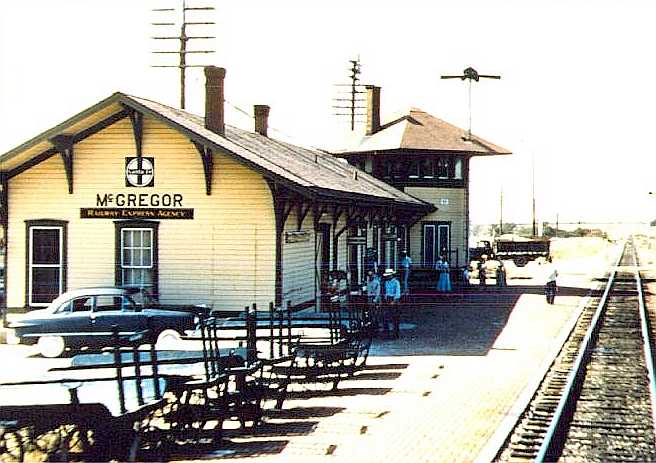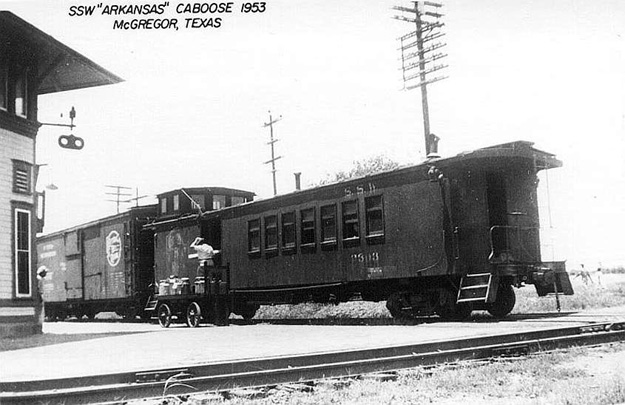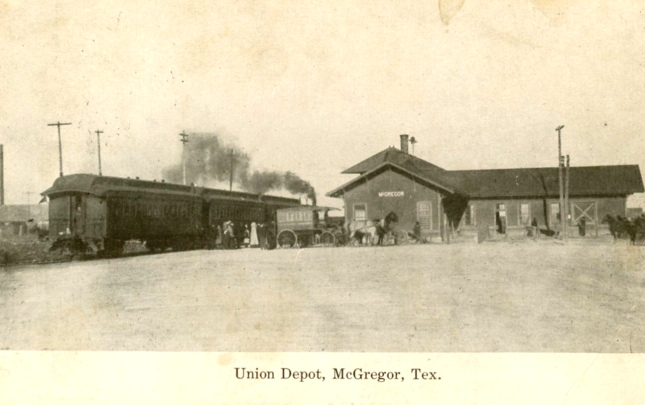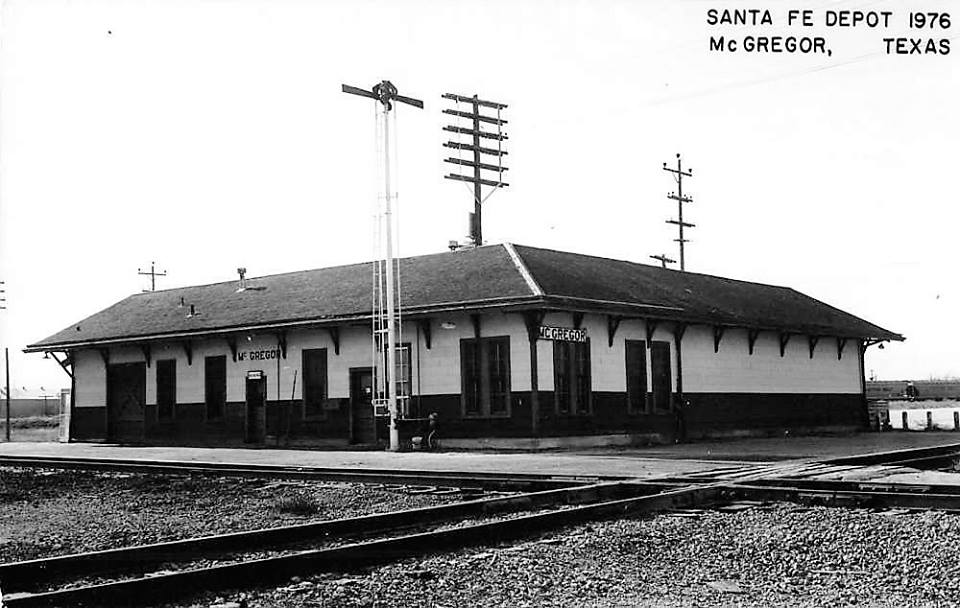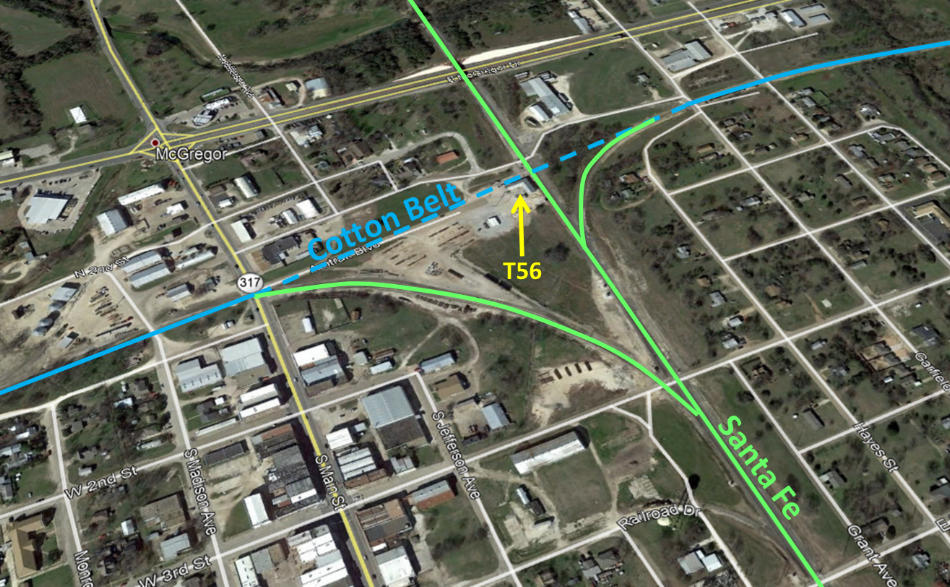
Above: Tower 56 was a combination tower and depot. (DeGolyer Library, hat tip Myron Malone)
Texas Railroad History - Tower 56 - McGregor
A Crossing of the Gulf, Colorado & Santa Fe Railway and the
St. Louis Southwestern Railroad

Above: Tower 56 was a combination tower and depot.
(DeGolyer Library, hat tip Myron Malone)
In 1881, the Gulf, Colorado and Santa Fe (GC&SF) Railway built north out
of Temple to Ft. Worth, passing through the western reaches of
McLennan County less than 20 miles west of Waco. A year later, the Texas & St. Louis
(T&SL)
Railroad built from Waco to Gatesville, crossing the Santa Fe tracks at a place
that became known as McGregor, named for a doctor who donated land for the
right-of-way. The T&SL went bankrupt in 1884, and its assets, including the
route through McGregor, ultimately became owned by the St. Louis Southwestern
(SSW, "Cotton Belt") Railroad in 1891. As a junction of two major railroads, the
McGregor crossing was a prime location for an interlocker. Tower 56 was
commissioned for service there on October 22, 1904, with an 18-lever electrical
interlocking plant installed by GC&SF. The tower structure was integrated
directly into the northeast corner of the Union Depot, which was located in the
southwest quadrant of the crossing. McGregor continued to grow,
exceeding 2,000 population by 1920. An Army ordnance plant was built southwest
of town during WWII and spur tracks were built into the complex from both
railroads.
Southern Pacific (SP) acquired full control of the Cotton Belt in the 1930s.
Years earlier, the Cotton Belt had acquired tracks west from Gatesville to
Hamilton and beyond, and
in 1942, SP abandoned the line from Gatesville to Hamilton. In 1972, service to
Gatesville ended when the line was abandoned west of Lime City, a few miles west
of McGregor.
In 1988, SP abandoned the former Cotton Belt line from Corsicana to Waco.
This was the line that connected Waco to SP's rail network, and as a result, SP's tracks
throughout Waco, along with the branch to Lime City, were stranded. In 1989, SP
service to McGregor and Lime City was terminated and the tracks were mostly
abandoned between Atco (on the western outskirts of Waco) and Lime City. Some
trackage remained in place near Tower 56 and was sold to Santa Fe so they could
serve industries in McGregor that had been served by SP.
Bradley Linda explains how SP sustained their stranded lines in Waco using
ex-Missouri Pacific (MoPac) tracks that were owned by Union Pacific (UP):
"After the Waco-Corsicana abandonment, SP built a 'freight connector' between the north end of the SSW yard and the former MoPac tracks near Orchard Lane. They ran the Mopac down to Valley Jct. then over to the SP yard in Hearne, and vice versa. In the 90's there was quite a lot of business on the East Waco-Atco segment, Warren Flour downtown, and a plastic flower pot place and Gulf States Paper between New Road and Valley Mills Dr. next to Franklin. Gross-Yowell Lumber got loads of lumber in on the 'Westview team' next to McCoys. There was a diaper manufacturer, a beer distributor, and several other customers, but the big customer was the Lehigh White Cement Co. at Atco (formerly Atlas-Portland Cement.) Now, the big customers are Lehigh, a plastics manufacturer, and Packaging Corp. of America out near Hewitt Dr."
UP had acquired and integrated Missouri Pacific in 1982, and in the mid-90s, they acquired SP as well, including the former Cotton Belt tracks around Waco and out to Atco which UP still serves. The former Cotton Belt bridge over the Brazos River provided access to SP customers in East Waco and remained in service until 2002. In McGregor, the Santa Fe line remains very active, now operated by Burlington Northern Santa Fe (BNSF).
